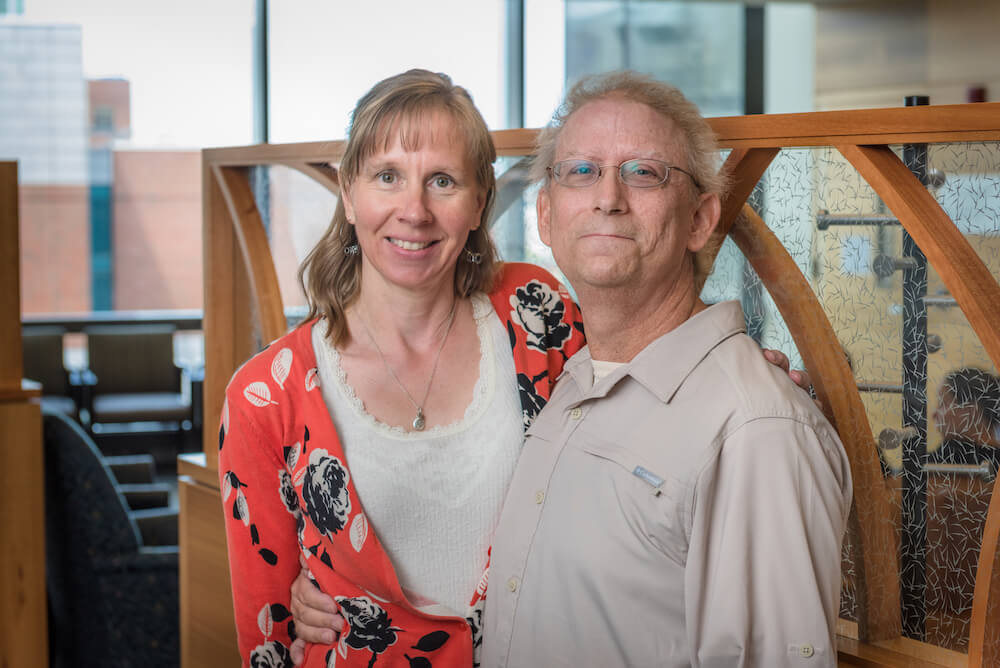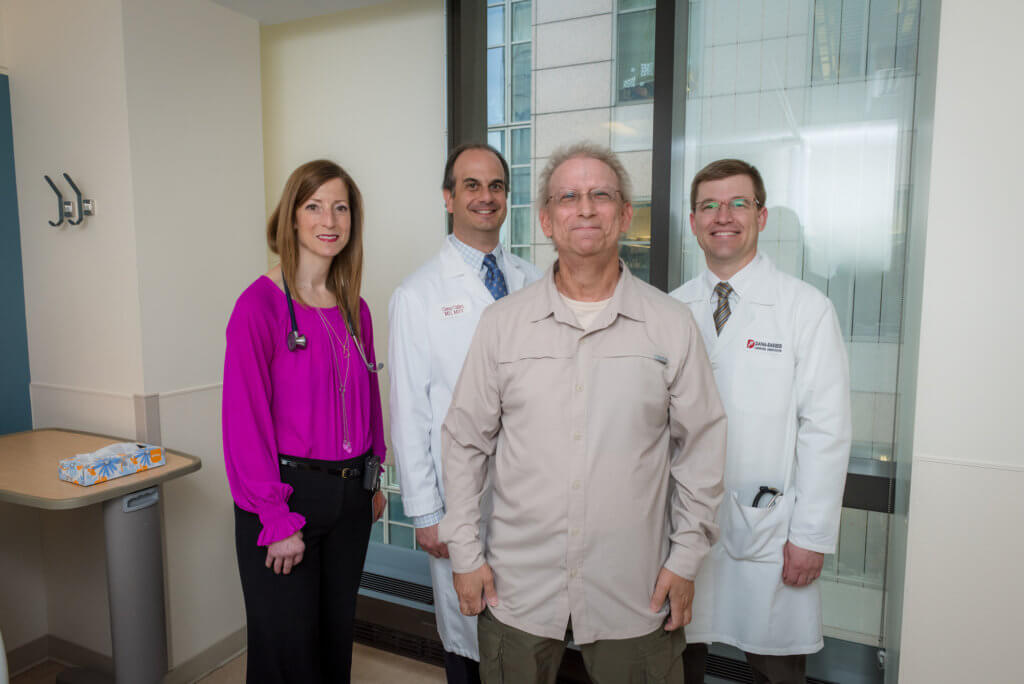In 2017, Keith Rohleder was diagnosed with a rare, aggressive blood cancer called blastic plasmacytoid dendritic cell neoplasm (BPDCN), which most people have never heard of. Even most physicians—including many oncologists—know little about the disease. But thanks to Rohleder and his caregivers, that is beginning to change.
BPDCN occurs in the bone marrow and blood. The BPDCN Center at Dana-Farber/Brigham and Women’s Cancer Center (DF/BWCC) is one of the first facilities in the U.S. to focus on care and research of the disease, and Rohleder was one of a dozen DF/BWCC patients to take part in a recent clinical trial.
Although it has characteristics similar to certain types of leukemia and lymphoma, BPDCN almost always presents first in the skin. Possible symptoms of the disease include skin lesions, low blood counts, and enlarged lymph nodes. Because symptoms and signs vary widely, and fewer than 1,000 people develop the disease per year, patients are often misdiagnosed.

“The first thing I noticed was a brownish-purplish spot on my right lower leg,” says Rohleder, 54, who lives in Maryland. “I felt fine, and had my usual high energy, so I ignored it. Then my wife, Tricia, started seeing smaller brown spots coming and going around my body. She pushed me to the dermatologist, and he thought at first that it was just a rash.”
A biopsy revealed it was BPDCN, and Keith and Tricia were referred to the DF/BWCC center. It was there, in May 2017, that center director Andrew Lane, MD, PhD, told the couple encouraging news: There was a new clinical trial that could put Keith into remission, after which he could receive a stem cell transplant to help prevent cancer recurrence.
As of today, he remains cancer-free.
“As we learn more about BPDCN, we are seeing it is closely related to acute myeloid leukemia (AML) or acute lymphoblastic leukemia (ALL),” says Lane. “Keith’s disease was just in his skin and lymph nodes, and had not yet progressed to his bone marrow. This made him an ideal candidate for the trial, which included intensive chemotherapy with a drug known as SL-401, and then a month of radiation concentrated on his skin.”
The Rohleders, who have two adult sons, took a year off work and moved to Boston so Keith could complete the trial and radiation regimen. Keith’s sister, Kelly, proved the best donor match for his new stem cells; she made her life-saving gift in the Kraft Family Blood Donor Center at Dana-Farber Cancer Institute and Brigham and Women’s Hospital last September, after which her cells were infused into Keith.
Corey Cutler, MD, MPH, was Keith’s transplant physician. It was only the second he ever completed on a BPDCN patient, but he was very familiar with what he would find.
“I perform a lot of transplants on patients with cutaneous T-cell lymphomas, lymphomas of the skin,” explains Cutler. “Working with Andy [Lane] and our Cutaneous Oncology group, we have adapted our transplant and radiation approach for those patients to use on BPDCN patients. We are gaining new insights from individuals like Keith at the same time we’re using what we’ve learned in the past to help them.”

The transplant was a success. Although Keith has experienced some side-effects including graft-versus-host disease (GVHD), he and Tricia moved home to Maryland in March. They travel to Boston for monthly check-ups, and are also spreading the word about BPDCN through television interviews. “We owe it to Dana-Farber to help any way we can,” says Keith.
Efforts like these, says Lane, are building the center’s patient population. So are additional clinical trials; while the SL401 trial is under review by the Food and Drug Administration, two more studies are in development. Lane is now seeing as many BPDCN patients monthly as he used to see in a year.
“In addition to being part of the trial, Keith allowed us to take samples of his leukemia cells back to the laboratory,” says Lane. “We are using them to make new tumor models and develop new therapies. The only way we are going to make more strides against the disease is continuous research.”
Learn more about the BPDCN Center at Dana-Farber Cancer Institute.
